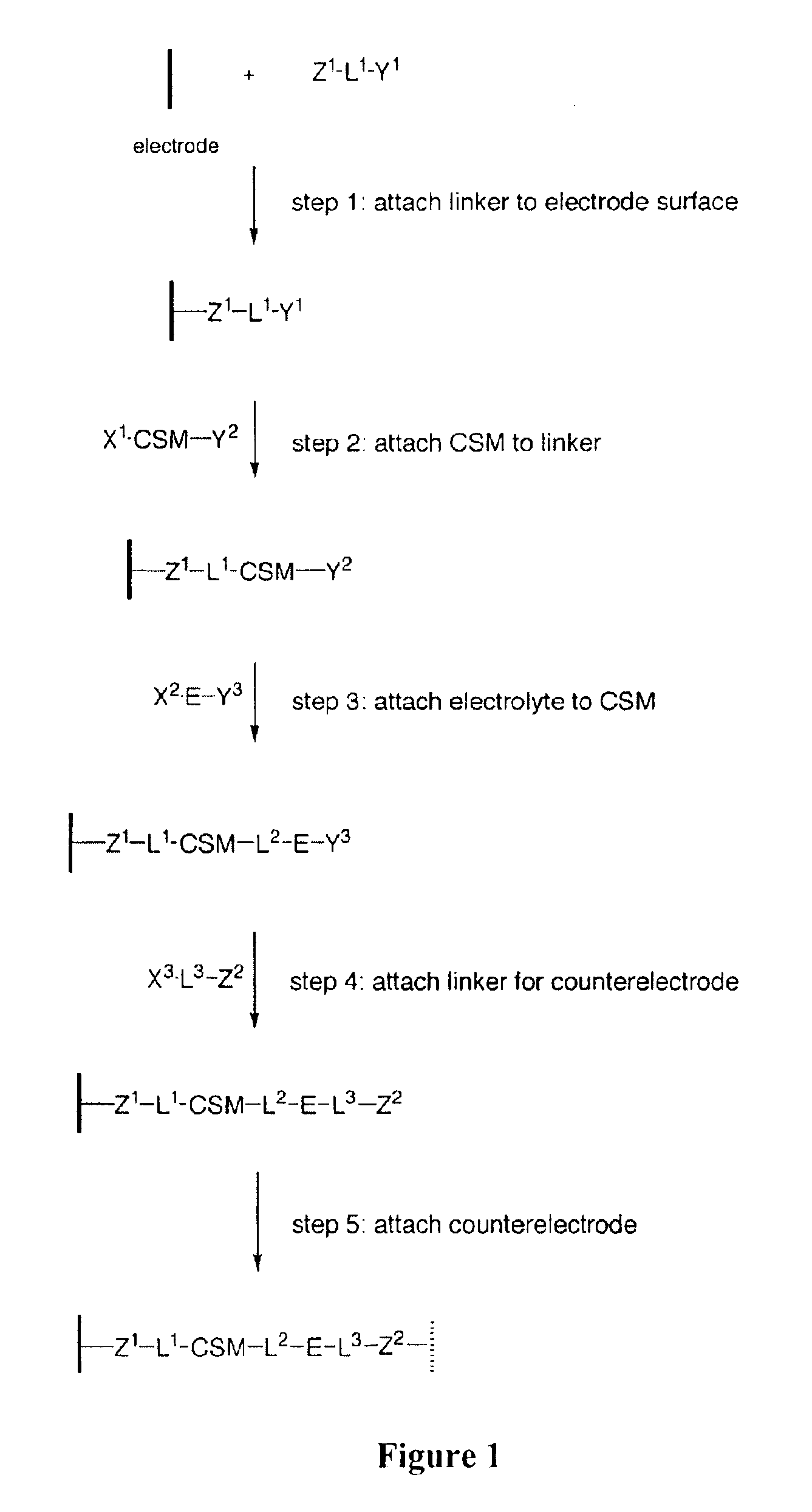Method of making information storage devices by molecular photolithography
a technology of information storage and photolithography, which is applied in the direction of photomechanical equipment, instruments, nuclear engineering, etc., can solve the problems of affecting the quality of the material used, the method of attaching molecules to the surface requires very high concentration, and/or the use of reactive intermediates, etc., and achieves the effect of reducing the number of lithography-based materials, less satisfactory, and avoiding lithography
- Summary
- Abstract
- Description
- Claims
- Application Information
AI Technical Summary
Benefits of technology
Problems solved by technology
Method used
Image
Examples
Embodiment Construction
[0016]“Coupling” as used herein refers to the coupling of one molecule to another by one or more strong bonds, such as covalent bonds or electrostatic bonds. Coupling steps may be direct or indirect (e.g., coupling through an intervening molecule such as a photocleavable linking group, additional linking group, etc.).
[0017]“Substrate” as used herein means any substrate, including but not limited to organic and inorganic solid substrates such as glass, silicon, silicon dioxide, etc., which may be insulators, conductors, etc.
[0018]“Charge storage molecule” and “storage molecule” are used interchangeably herein and refer to a molecule having one or more oxidation states that can be used for the storage of information (e.g. a molecule comprising one or more redox-active subunits). Preferred storage molecules have two or more different and distinguishable non-neutral oxidation states. Such charge storage molecules generally comprise a backbone polymer.
[0019]“Charge storage group” as used...
PUM
| Property | Measurement | Unit |
|---|---|---|
| temperature | aaaaa | aaaaa |
| voltage | aaaaa | aaaaa |
| voltage | aaaaa | aaaaa |
Abstract
Description
Claims
Application Information
 Login to View More
Login to View More - R&D
- Intellectual Property
- Life Sciences
- Materials
- Tech Scout
- Unparalleled Data Quality
- Higher Quality Content
- 60% Fewer Hallucinations
Browse by: Latest US Patents, China's latest patents, Technical Efficacy Thesaurus, Application Domain, Technology Topic, Popular Technical Reports.
© 2025 PatSnap. All rights reserved.Legal|Privacy policy|Modern Slavery Act Transparency Statement|Sitemap|About US| Contact US: help@patsnap.com



